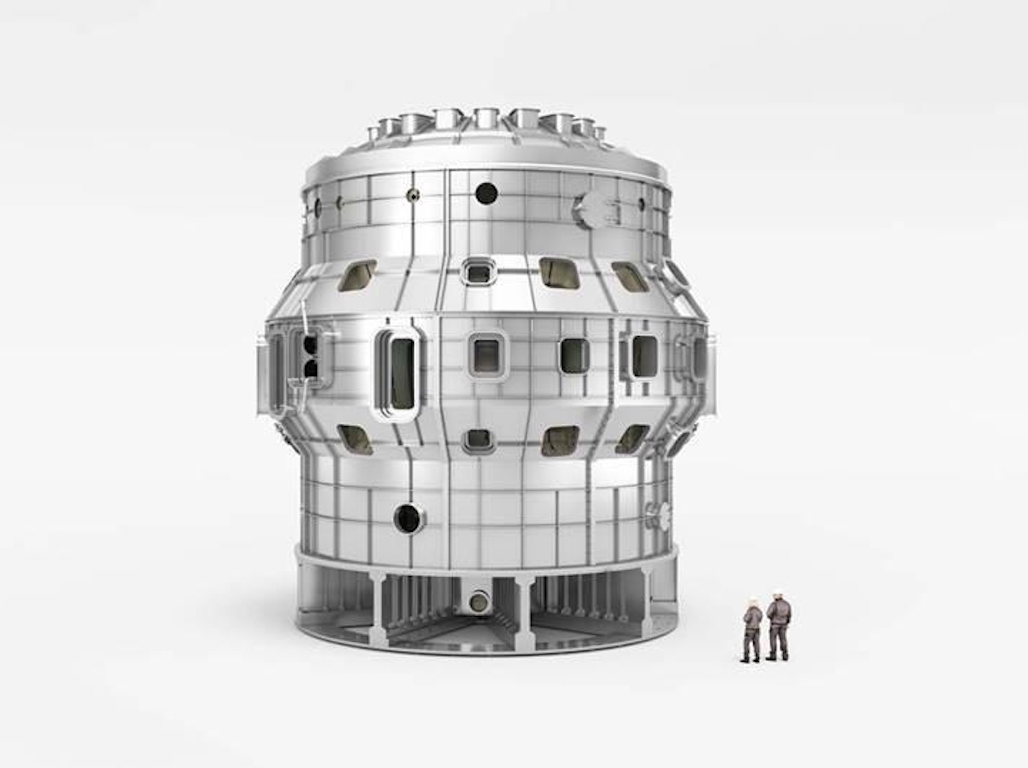12 December 2023 | The world’s most powerful experimental nuclear fusion reactor has been inaugurated in Japan. The JT-60SA reactor, also known as a tokamak, is the result of scientific collaboration between the European Union and Japan to further develop nuclear fusion.
The aim of the facility is to investigate the feasibility of fusion as a safe, large-scale and carbon-free energy source. In contrast to fission, the technique currently used in nuclear power plants, fusion fuses two atomic nuclei instead of splitting one. Compared to fission, fusion poses no risk of catastrophic nuclear accidents like the one in Fukushima in 2011 and, according to its proponents, produces far less radioactive waste than current power plants.
“The reactor is the result of a collaboration between more than 500 scientists and engineers and more than 70 companies across Europe and Japan,” said Sam Davis, deputy project manager for the facility, at the opening ceremony. “It will bring us closer to fusion energy.“
The potential of fusion energy
Although the technology is still in its infancy, its proponents see it as the answer to mankind’s future energy needs.
Nuclear fusion has the potential “to become a key component of the energy mix in the second half of this century“, explained EU Commissioner Kadri Simson, who inaugurated the reactor together with the Japanese Minister of Culture and Science, Masahito Moriyama.
JT–60SA will enable the scientific community to build up further expertise and carry out plasma operations. All new findings will feed directly into ITER, the largest international fusion experiment currently under construction in the south of France. Researchers at ITER, which has been plagued by budget overruns, delays and technical problems, hope to achieve the main goal of nuclear fusion technology: net energy production.
Environmentalists criticise nuclear fusion as inefficient, complex and expensive. It is still decades away from being ready for the market, so the focus should be on renewable energies such as solar energy for the energy transition.
European–Japanese joint project
The total cost of the project for the construction phase (2007–2020) was estimated at 560 million euros, to be borne jointly by Europe and Japan. 80 percent of the European contribution was shouldered by various voluntarily participating organisations such as the Karlsruhe Institute of Technology and EUROfusion, a European consortium of 31 nuclear fusion laboratories; the remaining 20 percent was financed directly from the EU budget via the EU institute Fusion for Energy (F4E).
Since the operational phase from 2020, the European Union has also provided around 75 million euros from the EU budget to date.
Fusion for Energy (F4E), based in Barcelona, Spain, is a joint undertaking of the European Union for the ITER nuclear fusion research project. As part of the “Broader Approach“ agreement with Japan, F4E supports research and development initiatives and prepares the construction of fusion reactors for demonstration purposes.
More info: https://fusionforenergy.europa.eu/news/jt-60sa-is-officially-the-most-powerful-tokamak/
